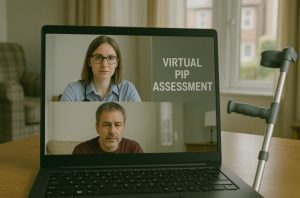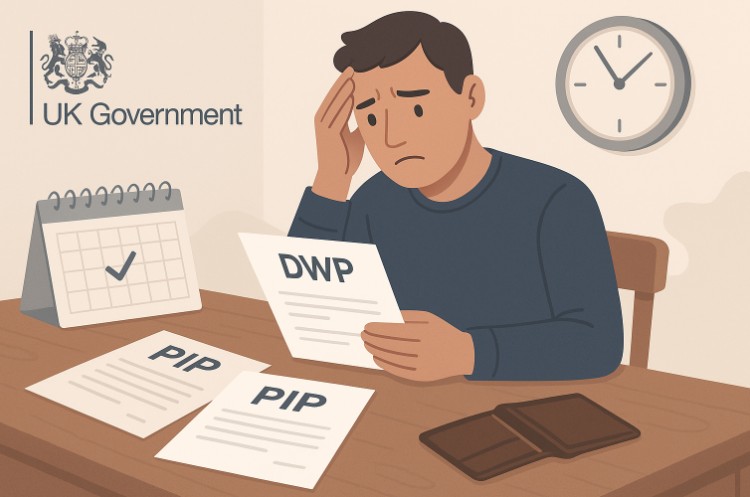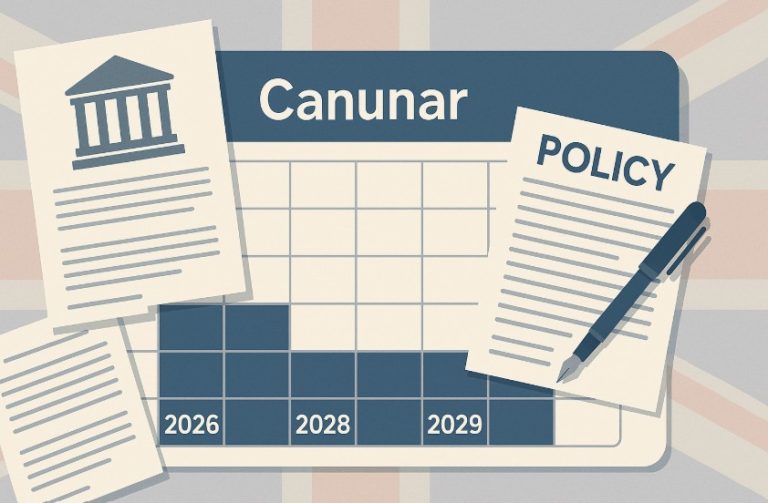Personal Independence Payment (PIP) is a critical financial support benefit offered by the UK government to assist individuals with long-term health conditions or disabilities.
Administered by the Department for Work and Pensions (DWP), PIP offers support based on how a condition affects daily life and mobility, rather than the condition itself.
What Is Personal Independence Payment (PIP) and Who Administers It?

Personal Independence Payment (PIP) is a disability benefit provided by the Department for Work and Pensions (DWP) for individuals in England, Wales, and Northern Ireland.
It is designed to support people who liv==e with long-term physical or mental health conditions that affect their daily living or mobility. The benefit is not affected by income, savings, or employment status.
PIP is paid in two components:
- Daily Living Component
- Mobility Component
Each component is paid at either a standard or enhanced rate depending on the severity of the claimant’s needs.
The application process involves an assessment of how a person’s condition affects their everyday functioning, rather than focusing on the condition itself.
How Much Can You Get from PIP in 2025?
The amount you receive from PIP depends on how your condition impacts your daily life and ability to get around. Below are the current weekly rates for 2025:
Weekly Payment Rates
| Component | Standard Rate | Enhanced Rate |
| Daily Living Component | £72.65 | £110.40 |
| Mobility Component | £29.20 | £77.05 |
You may qualify for one or both components. The maximum amount a person can receive is £187.45 per week if they qualify for both components at the enhanced rate.
What Are the Special Rules for End of Life Claims?

The DWP offers special rules for individuals nearing the end of life. This fast-tracked process ensures that those with terminal illnesses receive financial support quickly and without the usual assessment process.
You may be eligible for PIP under special rules if:
- A medical professional has confirmed you may have 12 months or less to live
- You are aged 16 or over
- You are under State Pension age if you have not previously claimed PIP
To apply under these rules, a healthcare professional must complete a form called the SR1. This form can either be sent to you or submitted directly to the DWP. Claimants do not need to attend a face-to-face assessment under these circumstances.
Under the special rules, applicants automatically receive the enhanced rate of the daily living component (£110.40 per week).
Whether or not you receive the mobility component depends on how your condition affects your ability to move around.
If you also claim Universal Credit, you should log in to your online account and note that the SR1 has been submitted.
What Conditions Qualify for the £110 PIP Weekly Support?
PIP is awarded based on how a condition affects your ability to manage daily activities and mobility.
Although the DWP recognises many specific health conditions, especially musculoskeletal conditions, eligibility is not limited to those on a defined list.
You may still qualify even if your condition is not specifically mentioned. The key factor is whether your symptoms and physical or cognitive limitations interfere with daily tasks like preparing food, managing medication, washing, dressing, or moving around.
What Are the 87 Musculoskeletal Conditions Recognised by DWP?

The Department for Work and Pensions (DWP) acknowledges a broad range of musculoskeletal conditions when assessing eligibility for Personal Independence Payment (PIP).
These conditions, while significant, are assessed based on how they affect daily living and mobility rather than by diagnosis alone.
Below is the complete list of 87 musculoskeletal conditions that the DWP has recognised as potentially qualifying for PIP:
Complete List of 87 Musculoskeletal Conditions
| No. | Condition |
| 1 | Osteoarthritis of Hip |
| 2 | Osteoarthritis of Knee |
| 3 | Osteoarthritis of other single joint |
| 4 | Primary generalised Osteoarthritis |
| 5 | Chronic fatigue syndrome (CFS) |
| 6 | Fibromyalgia |
| 7 | Pain syndromes – Chronic – Other/type not known |
| 8 | Ankylosing spondylitis |
| 9 | Arthritis – Psoriatic |
| 10 | Arthritis – Reactive |
| 11 | Inflammatory arthritis – Other/type not known |
| 12 | Juvenile chronic arthritis (Still’s disease) |
| 13 | Rheumatoid arthritis |
| 14 | Crystal deposition disorders – Other/type not known |
| 15 | Gout |
| 16 | Pseudogout |
| 17 | Osteochondritis |
| 18 | Osteonecrosis |
| 19 | Osteomalacia |
| 20 | Osteoporosis |
| 21 | Other metabolic and endocrine disorders of musculoskeletal system |
| 22 | Paget’s disease |
| 23 | Rickets |
| 24 | Achondroplasia |
| 25 | Epiphyseal dysplasia – multiple |
| 26 | Genetic disorders, dysplasias and malformations – Other/type not known |
| 27 | Hereditary multiple exostosis (diaphyseal aclasis) |
| 28 | Hypermobility syndrome |
| 29 | Marfan’s syndrome |
| 30 | Osteogenesis imperfecta |
| 31 | Tumours of bone – benign |
| 32 | Compartment syndrome (Volkmann’s ischaemia) |
| 33 | Fracture complications – Other/type not known |
| 34 | Sudek’s atrophy |
| 35 | Generalised musculoskeletal disease – Other/type not known |
| 36 | Adhesive capsulitis (frozen shoulder) |
| 37 | Rotator cuff disorder |
| 38 | Shoulder disorders – Other/type not known |
| 39 | Shoulder instability |
| 40 | Elbow disorders – Other/type not known |
| 41 | Golfer’s elbow (medial epicondylitis) |
| 42 | Tennis elbow (lateral epicondylitis) |
| 43 | Carpal tunnel syndrome |
| 44 | Dupuytren’s contracture |
| 45 | Tendon lesions |
| 46 | Tenosynovitis |
| 47 | Wrist and hand disorders – Other/type not known |
| 48 | Cervical disc lesion |
| 49 | Cervical spondylosis |
| 50 | Neck disorders – Other/type not known |
| 51 | Whiplash injury |
| 52 | Back pain – Non-specific (mechanical) |
| 53 | Back pain – Specific – Other/type not known |
| 54 | Kyphosis |
| 55 | Lumbar disc lesion |
| 56 | Lumbar spondylosis (OA spine) |
| 57 | Schuermann’s disease |
| 58 | Scoliosis |
| 59 | Spinal stenosis |
| 60 | Spondylolisthesis |
| 61 | Dislocation of the hip – congenital |
| 62 | Hip disorders – Other/type not known |
| 63 | Perthes disease |
| 64 | Slipped upper femoral epiphysis |
| 65 | Bursitis |
| 66 | Chondromalacia patellae |
| 67 | Knee disorders – Other/type not known |
| 68 | Ligamentous instability of knee |
| 69 | Meniscal lesions |
| 70 | Osgood Schlatter’s disease |
| 71 | Osteochondritis dissecans |
| 72 | Patellar dislocation – Recurrent |
| 73 | Ankle and foot disorders – Other/type not known |
| 74 | Club foot (talipes) |
| 75 | Forefoot pain (Metatarsalgia) |
| 76 | Hallux valgus / rigidus |
| 77 | Amputation – Lower limb(s) |
| 78 | Amputation – Upper limb(s) |
| 79 | Amputations – Upper and Lower limb(s) |
| 80 | Abdomen – Injuries/Fracture/Dislocation of |
| 81 | Lower limb – Injuries/Fracture/Dislocation of |
| 82 | Multiple – Injuries/Fracture/Dislocation |
| 83 | Pelvis – Injuries/Fracture/Dislocation of |
| 84 | Spine – Injuries/Fracture/Dislocation of |
| 85 | Thorax – Injury/Fracture/Dislocation of |
| 86 | Upper limb – Injury/Fracture/Dislocation of |
| 87 | Musculoskeletal disease – Regional/Localised – Other/type not known |
This list is based on reported cases and DWP records, particularly from the Manchester Evening News and related government documentation.
While comprehensive, eligibility for PIP is not limited to only these conditions. Anyone whose condition significantly affects their daily life or mobility should consider applying.
How Does the PIP Assessment Process Work?

After submitting your claim to the DWP, the next stage usually involves an assessment conducted by an independent health professional. The purpose of this assessment is to determine how your condition impacts your daily functioning.
Types of assessments include:
- Telephone interviews
- Video call assessments
- In-person assessments at assessment centres
- Paper-based reviews if sufficient evidence is available
The assessment evaluates how well you can complete specific tasks related to daily living and mobility. Each task is scored, and the total score determines the rate and components of PIP you are awarded.
A few areas considered during the assessment include:
- Preparing and eating food
- Washing and bathing
- Managing medication or therapy
- Communicating and engaging with others
- Moving around indoors and outdoors
What Are the Two Main Components of PIP and How Do They Affect Payment?
Each PIP component is assessed separately. You can receive one or both based on the extent of support needed.
Daily Living Component
This part is for people who need help with everyday tasks. It includes things like:
- Cooking meals
- Taking medication
- Dressing and undressing
- Personal hygiene
Mobility Component
This section covers your ability to get around. It includes:
- Planning and following journeys
- Physically moving between locations
Based on the outcome of your assessment, you’ll be awarded the standard or enhanced rate for each component. The more assistance you require, the higher your rate will be.
How Can You Make a PIP Claim in the UK?
To start your claim for PIP, contact the DWP’s PIP claims line. The process generally involves:
- Providing personal and medical information
- Filling out a “How Your Disability Affects You” form
- Submitting supporting medical evidence
Documents to Prepare
- GP reports
- Hospital discharge summaries
- Medication records
- Letters from carers or support workers
You can also ask someone to support you during the claim process. This can include family members, friends, or professionals from advice agencies.
What Happens After You Submit Your PIP Application?
Once the application is submitted and the required documents are provided, the DWP will:
- Review your medical and personal information
- Arrange an assessment if needed
- Send you a decision letter detailing the award and payment rates
If you disagree with the decision, you have the right to request a mandatory reconsideration within one month of the decision. If the result remains unchanged, you can appeal the decision to an independent tribunal.
What Should You Know About PIP in Scotland?
In Scotland, Personal Independence Payment is gradually being replaced by Adult Disability Payment (ADP), which is managed by Social Security Scotland. The criteria for ADP are largely similar to PIP, but the process is designed to be more supportive and less stressful for claimants.
Scottish residents should apply for ADP instead of PIP if they are making a new claim. Existing PIP claimants in Scotland will be transferred to ADP in phases.
What Tips Can Help Improve Your Chances of a Successful PIP Claim?
When completing your application, it is important to provide as much relevant information as possible. A few helpful tips include:
- Describe your worst day when answering each question
- Give examples of how your condition affects you in daily life
- Submit recent and relevant medical evidence
- Be consistent in your responses
- Ask someone to review your form before submission
These practices can increase the likelihood of receiving the correct level of support.
Why Is It Important to Apply Even If You’re Unsure About Your Condition?

Many individuals do not apply for PIP because they assume they are not eligible, especially if their condition is not listed explicitly. However, eligibility is based on how the condition affects your life, not its name.
If you experience difficulty with day-to-day tasks or mobility due to a physical or mental condition, it is worth making a claim. The assessment will consider your abilities across a range of daily activities, providing a fair opportunity to qualify for financial support.
Conclusion
PIP provides essential financial support that can significantly improve the quality of life for individuals with chronic health conditions or disabilities.
Whether your condition is on the official list or not, if it affects your ability to function day-to-day, you may be eligible. With potential payments of up to £110 per week, it’s worth investigating your options and starting the claim process as early as possible.
FAQs About PIP and the 87 Recognised Conditions
What is the age limit for claiming PIP?
You must be aged 16 or over and under State Pension age if applying for the first time.
Can you receive PIP if you’re working?
Yes, PIP is not means-tested and does not depend on your income or employment status.
How long does it take to receive a decision on a PIP claim?
Decisions can take several weeks, but under special rules for end of life, the process is expedited.
Can mental health conditions qualify for PIP?
Yes, PIP covers both physical and mental health conditions that impact daily life or mobility.
Is a diagnosis required to apply for PIP?
A diagnosis helps, but the assessment is focused on how your condition affects daily living and mobility.
How often are PIP claims reviewed?
It depends on your condition. Reviews typically occur every 2–10 years, or sooner if your condition changes.
What happens if my PIP claim is denied?
You can request a mandatory reconsideration, and if still denied, appeal the decision to an independent tribunal.






